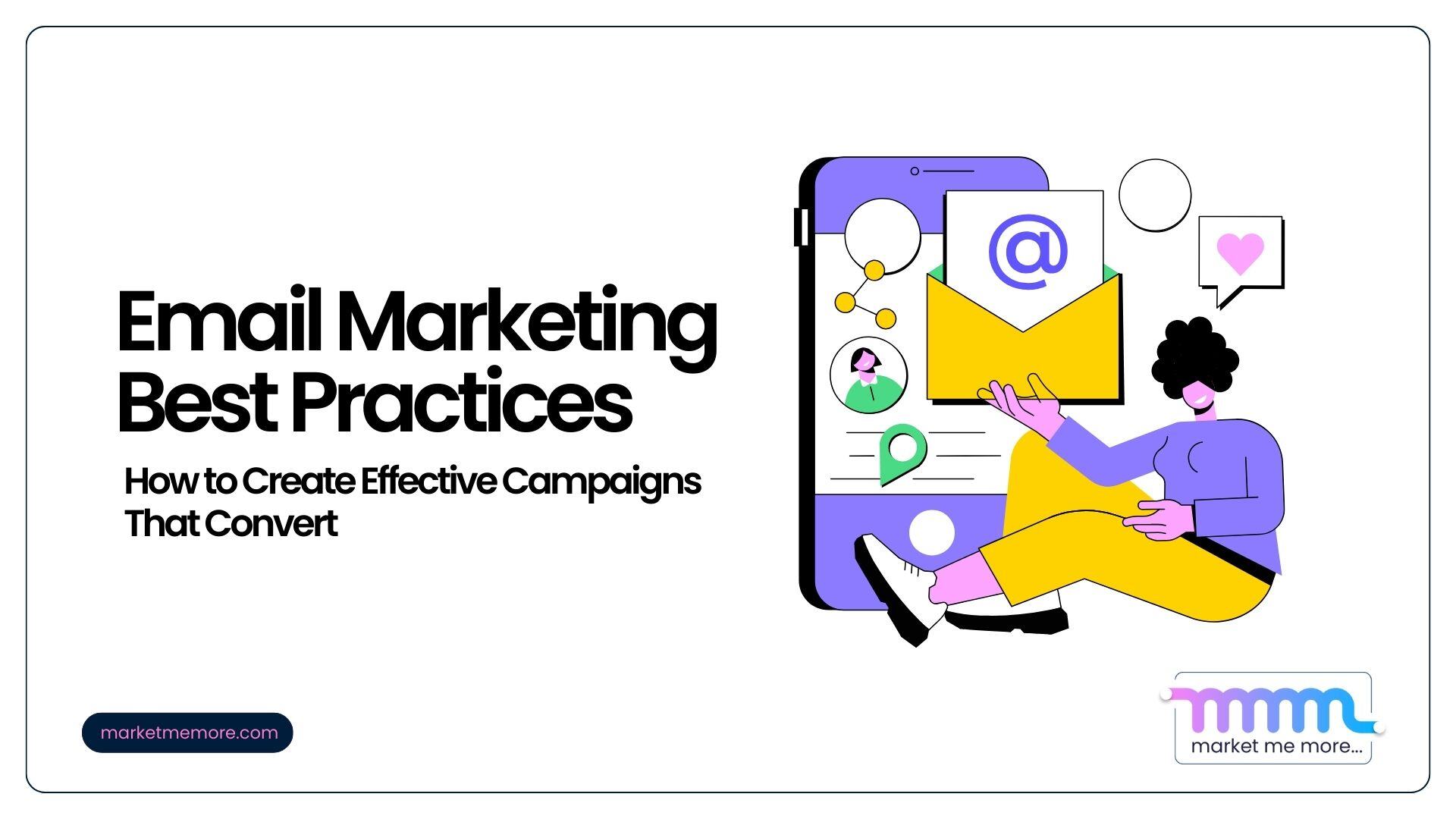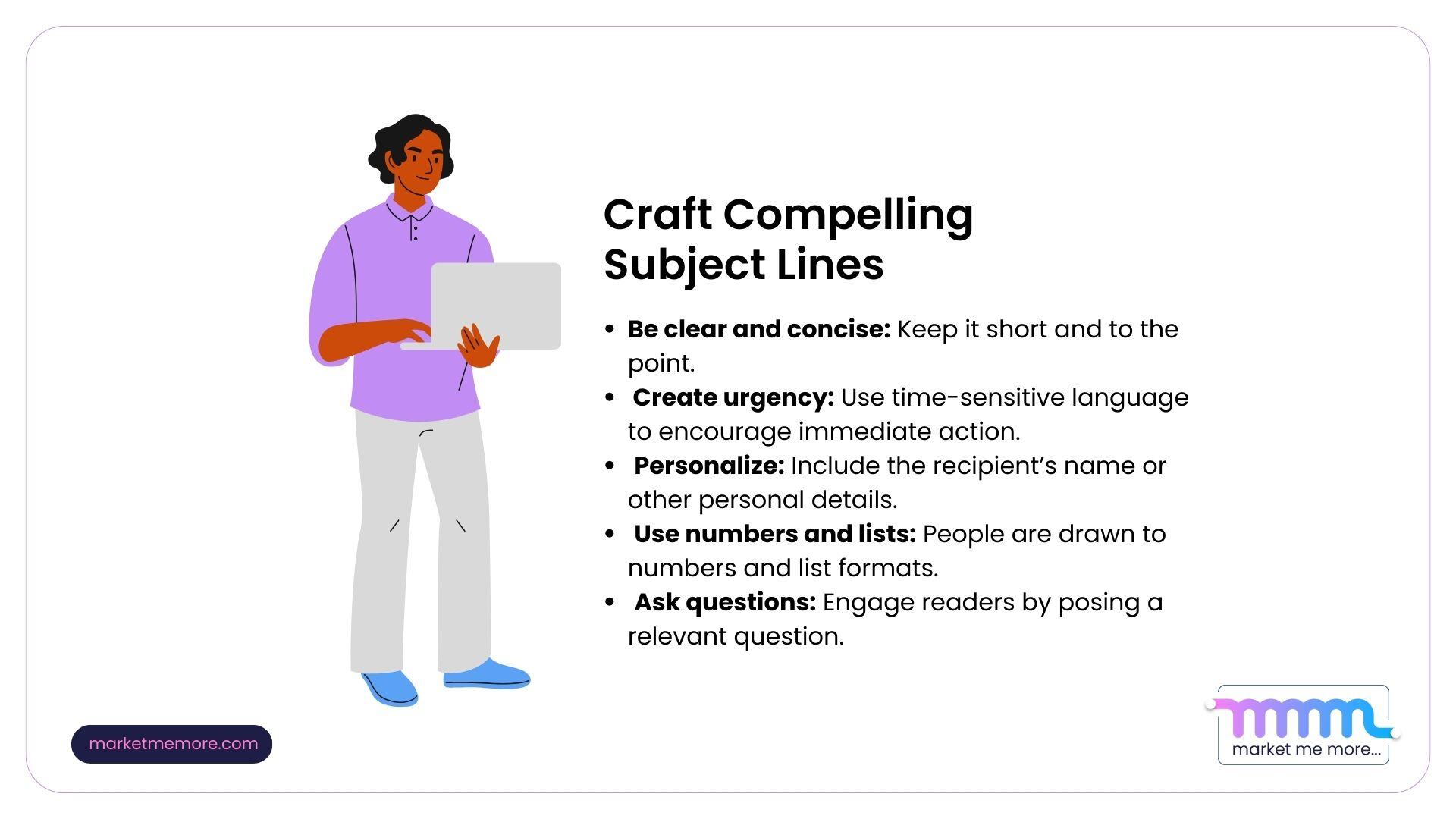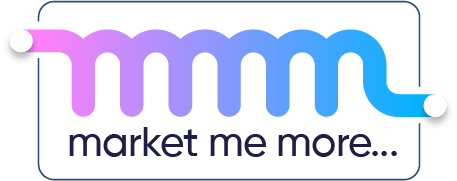Email Marketing Best Practices: How to Create Effective Campaigns That Convert
Use Proven Email Marketing Strategies to Increase Opens, Clicks, and Sales

Imagine this: It's Monday morning, and your inbox is flooded with emails. As you scroll through, one subject line grabs your attention: "Exclusive Savings Just for You!" Intrigued, you open it.
The email is visually appealing, personalized with your name, and offers a discount on a product you've had your eye on. Without thinking twice, you click through and make a purchase.
This is the power of effective email marketing.
Right now, competition for attention is becoming fierce. As a business owner or marketing team, you need to craft compelling email campaigns that resonate with your audience.
With the number of email users projected to reach 4.73 billion by 2026, don’t overlook the power of email marketing in transforming your digital marketing campaigns.
But how can you use these email marketing campaigns to convert your subscribers into loyal customers? This guide will look at the best practices you need to implement.
But first…
What is Email Marketing?
Email marketing uses electronic mail to connect with a list of subscribers. Each email sent to a prospective or existing customer could be considered email marketing. Businesses use these emails to send advertisements, request business, or solicit sales or donations.
The goal of email marketing is to nurture relationships with potential and current customers, which ultimately drives sales and brand loyalty.
There are different types of email marketing campaigns, each serving a specific purpose:
- Welcome emails: These emails introduce new subscribers to your brand, explain what to expect from your emails, and potentially offer a discount or incentive.
- Promotional emails: They are used to announce sales, discounts, new product launches, or offers to encourage purchases.
- Newsletters: Businesses use newsletters to share valuable content, industry updates, company news, or educational resources to keep subscribers engaged and informed.
- Re-engagement emails: You can send these types of emails to win back inactive subscribers. They are sent periodically to subscribers who haven't engaged in a while.
- Lead nurturing emails: These emails guide prospects through the sales funnel. For instance, you can send educational content, case studies, and testimonials designed to move leads toward conversion.
Best Practices for Effective Email Marketing Campaigns
According to a HubSpot report, 31% of marketers use email marketing. Further research by Statista shows that 52% of marketers that use email marketing campaigns had a two-time improvement rate on their return on investment (ROI), while 5.7% had the ROI rate go up four times and 12.9% had no improvement.
What differentiates these marketers? One key factor is the methods they use to implement email marketing campaigns. Here are the best practices and email marketing tips to consider for your campaign to convert.

Build a Quality Email List
A well-curated email list ensures that your marketing messages reach engaged and interested recipients, leading to higher open rates, click-through rates, and conversions. Sending emails to uninterested or irrelevant contacts can result in high unsubscribe rates, spam complaints, and damage to your reputation.
Here’s how to grow your email list organically:
- Use website signup forms: Clear forms strategically placed on your website make subscribing easy. You can attract customers by offering incentives like discounts or early access to new products.
- Lead magnets: Offer valuable downloadable content, such as ebooks, in exchange for email addresses. This builds trust and captures leads interested in your expertise.
- Run social media contests: Run contests that require email signup to participate. Putting this on your social media content management plan expands your reach and attracts a targeted audience.
- Organize webinars and events: These occasions offer a good opportunity to collect email addresses during online and offline events.
- Implement referral programs: Encourage existing subscribers to refer friends and colleagues.
Once you have your list, segment it based on demographics, interests, or purchase history. This allows for highly personalized emails that resonate better with each subscriber, leading to higher email conversion rates.
Craft Compelling Subject Lines
This subject line is the first thing recipients see and greatly influences whether they open the email. A strong subject line grabs attention, piques curiosity, and entices the reader to learn more. In addition, it influences the open rate and clickthrough rate, which are among the top two metrics that marketers use to track their email marketing campaigns.
To write attention-grabbing subject lines:
- Be clear and concise: Keep it short and to the point.
- Create urgency: Use time-sensitive language to encourage immediate action.
- Personalize: Include the recipient’s name or other personal details.
- Use numbers and lists: People are drawn to numbers and list formats.
- Ask questions: Engage readers by posing a relevant question.
For instance, if you are trying to make sales and convert loyal customers, a good example of subject lines could be:
- “Last chance to save 50%”
- “John, here’s a special offer just for you.”
- “Are you ready for the biggest sale of the year?”

Personalize and Segment the Emails
No two customers are alike. Personalization is key to making your emails resonate with each recipient.
Segmenting and personalizing makes your emails more relevant to every recipient, leading to higher click-through rates and conversions. For instance, if you address customers by their name, they feel valued and understood, increasing loyalty and conversion rates.
To make the campaign more effective, you can send special offers on a subscriber’s birthday or suggest products based on past purchases. Additionally, you can use abandoned cart emails to remind consumers about items left in their shopping carts.
Design Engaging Email Content
Now that you have a compelling headline, the process should not stop there. Your email should also be engaging to hook the reader and convert them to make a purchase or subscribe to your services.
What problems can you solve for your consumers? What content will they find valuable? Use this information to tailor your content to their needs and interests. Here’s how to make your email content more engaging:
- Add a preheader text: This is the short snippet displayed next to the subject line. Use it to elaborate on the email's content and entice clicks.
- Consider scannability: Keep emails short and to the point. Use bullet points, short paragraphs, and clear headings for easy reading. Busy subscribers will skim through the email, so make your message clear.
- Use benefit-driven language: How will it improve the customers’ lives? Spotlight the benefits your product or service offers throughout the email.
- Storytelling: Weave relatable stories into your emails to connect with readers on an emotional level. Stories make your message more memorable and engaging.
- Add strong calls to action (CTAs): Tell subscribers exactly what you want them to do next. Use clear, actionable CTAs like "Shop Now" or "Download Your Free Guide" placed strategically within the email.
- Use consistent branding: You need a steady brand identity across all email campaigns, including logos, color schemes, and fonts. Data by Statista shows that customers prefer brands that provide a consistent user experience. This reinforces brand recognition and builds trust.
- Add a professional design: Utilize email templates or design tools to create professional-looking emails with high-quality visuals. This creates a positive first impression and reflects well on your brand.
Optimize Email Campaigns for Mobile Devices
The number of smartphone users globally is projected to increase to 1.5 billion between 2024 and 2029. With these many users, a significant portion of emails are opened on mobile devices. Therefore, it’s best practice to ensure your emails are mobile-friendly to maximize engagement and conversions.
Optimizing for mobile devices is simple. You just need to:
- Use templates that automatically adjust to different screen sizes.
- Simplify layouts for better readability on small screens.
- Make text and CTAs easy to read and click.
You are more likely to reach and convert more people when your campaigns are tailored for mobile devices.
Automate your Email Campaigns
According to a PwC survey, in 2023, 73% of U.S. companies used artificial intelligence (AI) in different business areas. The advancement of these AI technologies presents an opportunity for digital marketers to automate.
As much as AI has made it easy to ideate, generate, and automate content, email automation has been there for a long time.
Use email marketing tools to set up automated emails that will be going out at set times to specific segments of your email list.
Automated email sequences save time and allow you to send targeted emails based on subscriber behavior.
For example, a welcome series automatically sends emails to new subscribers, nurturing the relationship.
Automation also helps you personalize the experience and increases engagement.
Leverage this technology to segment your audiences and send targeted email campaigns based on demographics, interests, or behavior.

Track and Analyze Campaign Results
After every campaign, you need to know how many people opened your email and which actions they took. Monitor email performance metrics like open rates, click-through rates, and conversion rates. This data helps you understand what's working and what's not.
Use these analytics to identify areas for improvement. For instance, you can A/B test different subject lines, CTAs, or email layouts to see what resonates best with your audience. This continuous monitoring process improves your email marketing strategies in the long run.
Craft Emails That Convert!
Email marketing remains a powerful tool for building brand loyalty, driving sales, and nurturing leads. You can turn clicks into customers by crafting emails that resonate with your audience and prioritize conversions.
Looking to refine your email marketing strategy? Contact our digital marketing experts at Market Me More today and learn more about our fractional marketing services. We'll help you craft compelling email campaigns that convert.



